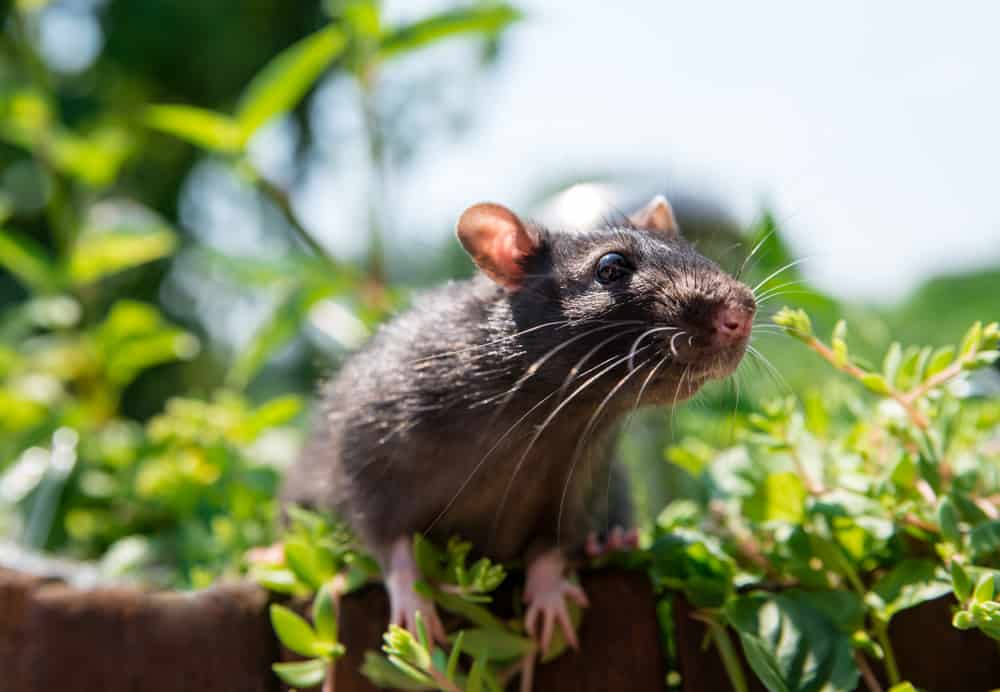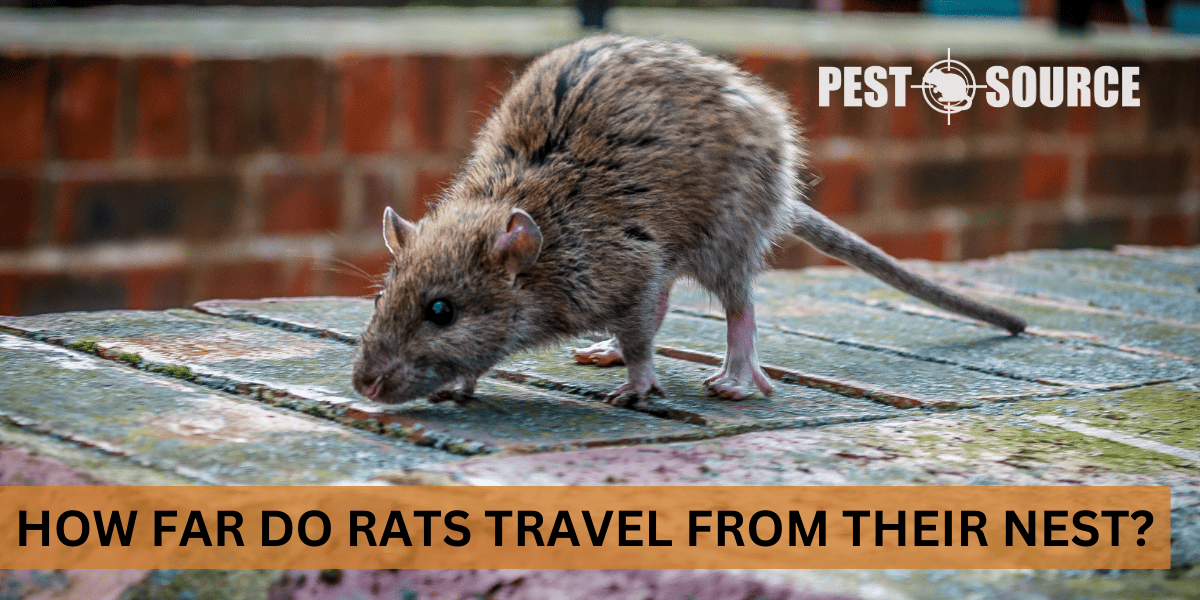Rats typically travel up to 300 feet from their nest to find food and water, but they may venture further if resources are scarce. This post will explore the range of rat movements and what influences their travel distance. Understanding how far rats roam is crucial for effective pest control and prevention, particularly in urban or residential settings.
POINTS
- Rats typically travel within a radius of about 300 feet from their nests, but this can vary depending on factors such as food availability, habitat, species, and sensory capabilities.
- Effective rat control requires understanding their nesting habits; rats can nest in various places like underground burrows, attics, and cluttered areas, and tend to return to the same nest if it’s undisturbed.
- Homeowners should take preventive measures against rat infestations by sealing entry points, maintaining cleanliness, storing food properly, and reducing clutter to eliminate potential nesting sites.
- Relocating rats should be done at least one mile away from the capture site to prevent them from returning, but it’s crucial to consider local wildlife regulations and the potential ineffectiveness of this method.
- Rats have a relatively short lifespan of about one year in the wild, which influences their travel range over time, and older rats may have more established routes and territories, making them harder to control.
Average Distance Rats Travel from Their Nests

Rats are known for their adaptability and resourcefulness, which includes their ability to travel significant distances from their nests in search of food, shelter, and mates. Understanding the travel habits of rats is crucial for effective pest control.
Rats typically travel within a specific radius from their nest. The average distance a rat travels from its nest is about 300 feet (90 meters). However, this range can vary depending on several factors. It’s important to note that rats will generally not stray too far from their nests unless it is necessary for their survival.
Factors Influencing Travel Distance
Several factors can influence how far a rat will travel from its nest:
- Searching for Food: Rats are opportunistic feeders and will travel farther if food sources near their nest are scarce. They have been known to travel up to 450 feet (137 meters) for food.
- Habitat: Urban rats may not need to travel as far because of the higher availability of food sources, while rural rats might roam over larger areas to find what they need.
- Rat Species: Different species have different ranges. For example, the Norway rat (Rattus norvegicus) tends to have a smaller range than the roof rat (Rattus rattus).
- Sensory Capabilities: Rats rely heavily on their keen sense of smell and touch to navigate and locate food. Poor vision may limit their travel at night, although their other senses compensate for this.
Specific Travel for Food
When it comes to food, rats are motivated travelers. They will often follow the same paths to and from food sources, using their strong sense of smell and tactile cues to navigate. Rats will travel as far as necessary to find food but prefer to forage within 50 to 150 feet (15 to 45 meters) of their nests.
Rat Movement Behaviors and Physical Capabilities
Rats are not only skilled survivors but also have impressive physical and behavioral adaptations that influence their movement patterns.
Rat Migration Patterns
While rats don’t migrate seasonally like some other animals, they will move en masse if their current habitat becomes unsuitable due to factors like food scarcity or extreme weather.
General Movement Behaviors
Rats are typically nocturnal and are most active during the night. They tend to follow established routes along walls and other structural elements, using their whiskers to sense their environment.
Travel in Packs
Rats are social creatures and may travel in groups, especially when young rats follow their mother to learn foraging paths. However, older rats are more likely to forage alone.
Ability to Return to the Same Nest
Rats have a strong homing instinct and can return to their nest even after traveling considerable distances. This ability is crucial for their survival, as it allows them to explore their environment while ensuring they can return to safety.
Physical Capabilities
Rats are agile creatures with several noteworthy physical capabilities:
- Falling: Rats can survive falls from heights that would be serious for other animals, which allows them to explore their environment from various vertical perspectives without significant risk.
- Swimming: Rats are strong swimmers, which can increase the range of their travel, especially in urban areas with waterways.
These capabilities directly influence their travel distances, as rats can navigate complex urban landscapes and return to their nests with relative ease.
Rat Nesting Habits, Social Structure, and Impact on Residential Areas
Understanding rat nesting habits and social structures is essential for homeowners looking to prevent or control rat infestations.
Where Rats Build Nests
Rats are not picky when it comes to nesting locations. They will nest anywhere that provides shelter, warmth, and proximity to food sources. Common nesting sites include:
- Underground Burrows: Especially for Norway rats, which prefer to dig.
- Attics and Roofs: Roof rats, as their name suggests, are adept climbers and prefer high places.
- Cluttered Areas: Garages, basements, and storage rooms that are cluttered provide excellent cover for rat nests.
Return to the Same Nest
Rats are creatures of habit and will often return to the same nest as long as it remains safe and undisturbed. This fidelity to a nesting site can make it easier to target and control rat populations.
Rat Colonies and Burrows
Rat colonies can vary in size, but a typical rat burrow will house a family of rats including a breeding pair and their offspring. The social structure within a colony can influence nesting habits, with dominant rats occupying the most favorable nesting sites.
Implications for Homeowners
For homeowners, the presence of rats can lead to structural damage and health risks. Rats are known to:
- Chew through Wires: Which can create fire hazards.
- Contaminate Food Sources: With their droppings and urine.
- Spread Diseases: Such as leptospirosis and salmonellosis.
Preventive Measures
To prevent rat infestations, homeowners should:
- Seal any cracks or openings larger than a quarter-inch.
- Keep living areas clean and free of food debris.
- Store food in rat-proof containers.
- Reduce clutter and potential nesting sites.
Effective Rat Relocation Strategies and Rat Longevity
When dealing with a rat caught in a trap, relocation is an option that must be handled carefully to be humane and effective.
Guidelines for Rat Relocation
To ensure that a relocated rat does not return, it should be released at least one mile away from the capture site. However, it’s important to consider the following:
- Local Wildlife Regulations: Some areas have laws against relocating rodents due to the risk of spreading diseases.
- Rat’s Survival: Relocated rats may struggle to find food or shelter, especially if released into unfamiliar territory.
Ethics and Effectiveness of Rat Relocation
Relocation should be considered carefully, as it can be stressful for the animal and may not be a long-term solution for pest control. Exclusion and habitat modification are often more effective and ethical strategies.
Lifespan and Travel Range Over Time
Rats typically live for about one year in the wild, but can live up to three years in captivity. The lifespan of a rat influences its travel range over time, with older rats potentially having more established routes and territories.
Concept of ‘Range Rats’
“Range rats” is a term that can be used to describe rats that have a larger than average travel range. These rats may be more challenging to control as they can spread infestations over wider areas.
In conclusion, understanding rat behavior, nesting habits, and physical capabilities are key to effective pest control. Homeowners should focus on prevention and consider the implications of relocation, keeping in mind the health and safety of both humans and wildlife.
What Does a Rat’s Nest Look Like?
A rat’s nest is typically a haphazard structure composed of shredded materials such as paper, cloth, or insulation gathered by the rodents to create a cozy, hidden environment for living and breeding. Rat’s nests appear as a loosely woven, ball-like assembly, often found in undisturbed, dark locations such as attics, walls, or among debris. Urban rats may also construct nests using available detritus, adapting to their environment; whereas, rural and wild rats often utilize natural fibers and vegetation. Each nest is strategically placed within close proximity to food sources, and its disorganized appearance belies its importance for the rodent’s survival, protection, and rearing of young.



